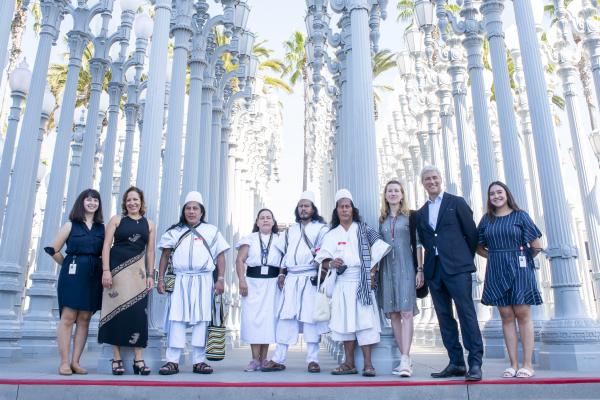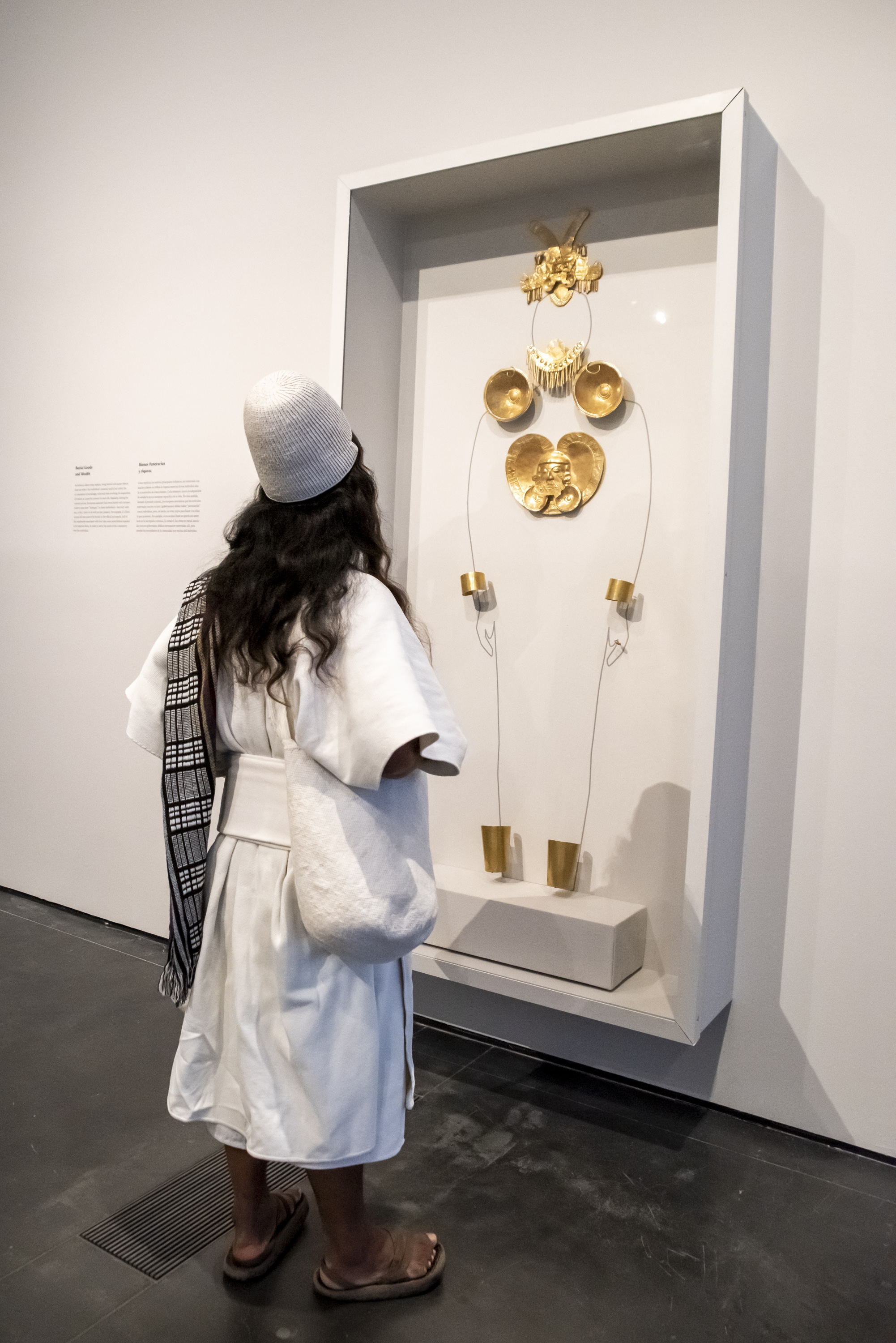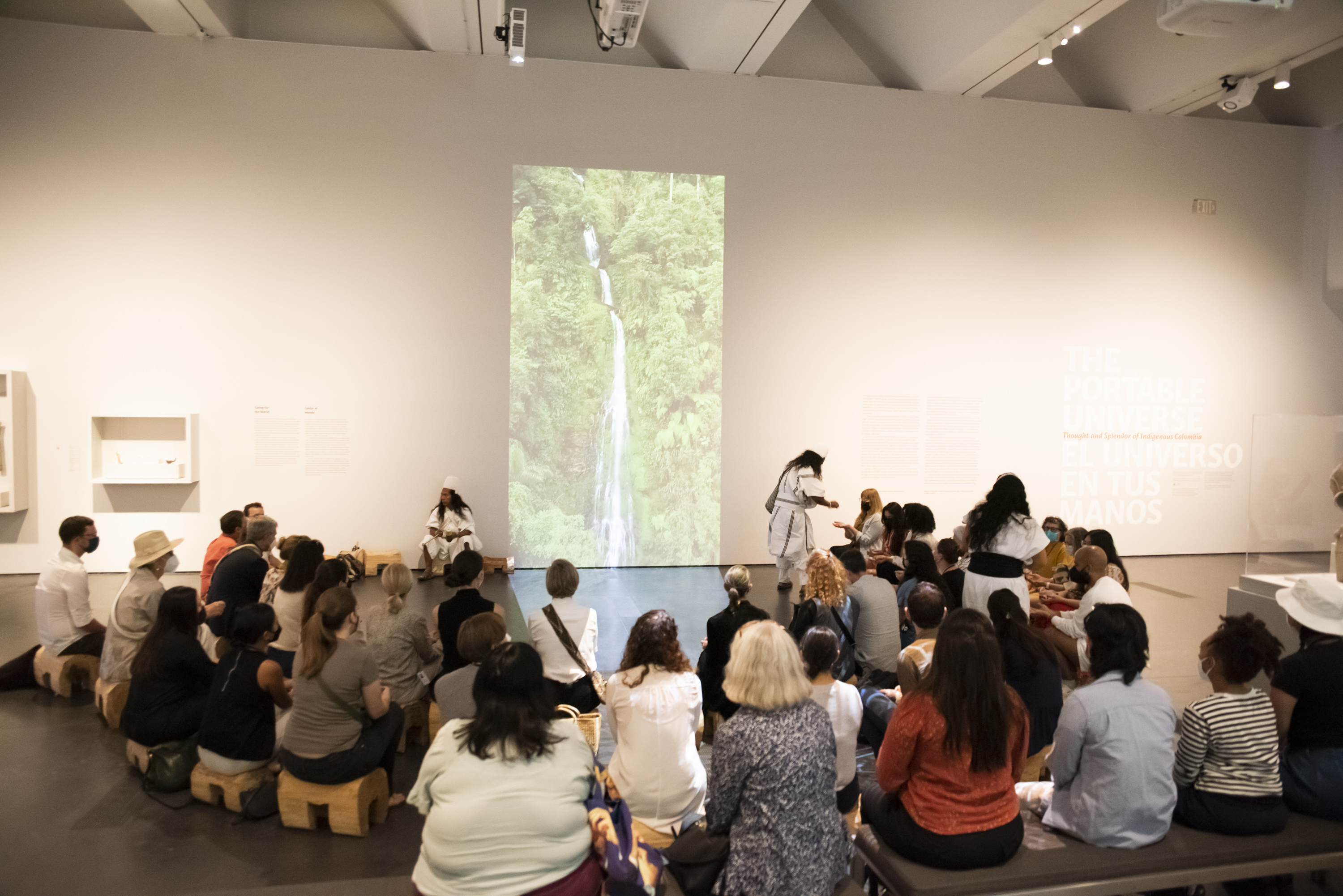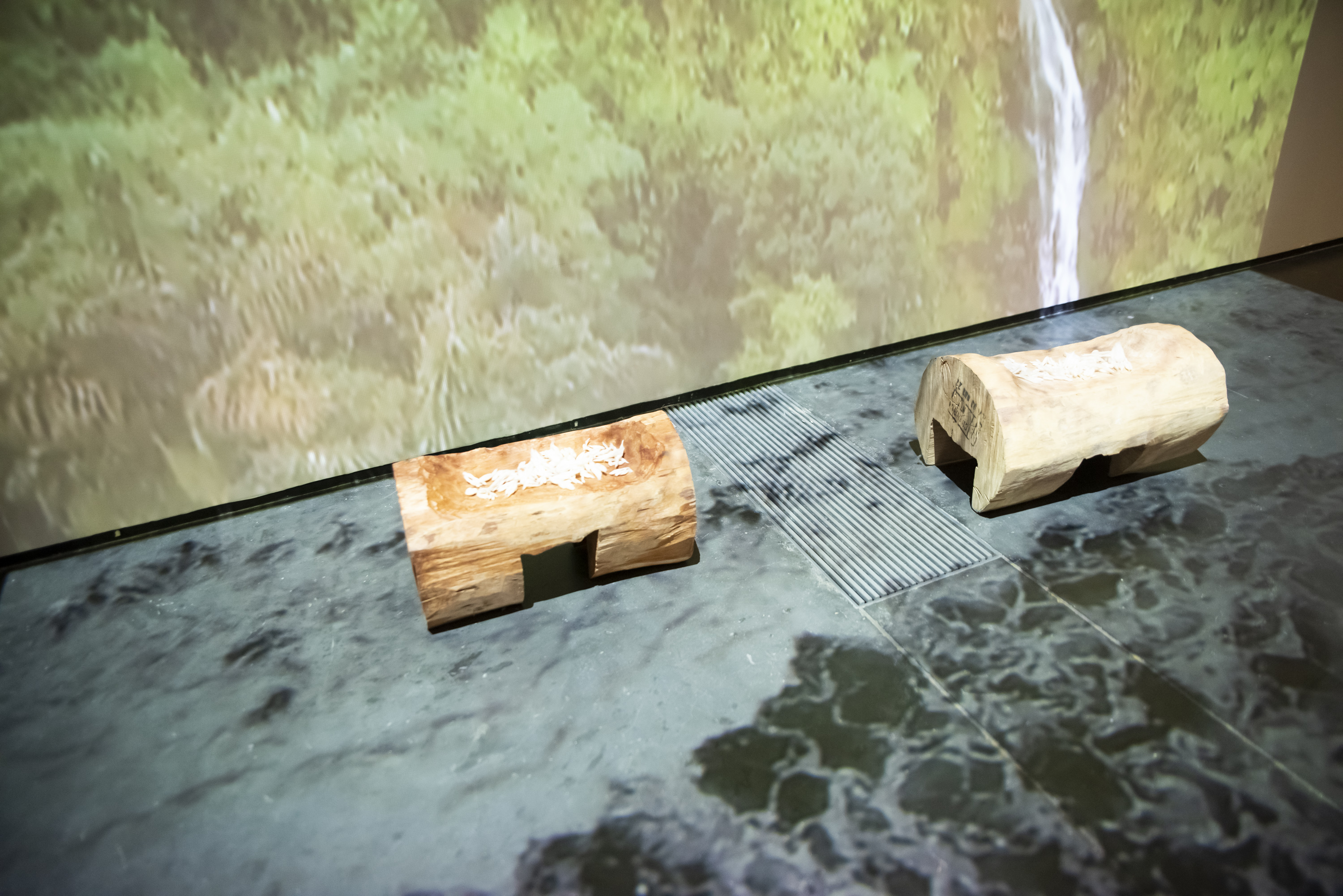The week of September 23–October 1, 2022, LACMA’s Art of the Ancient Americas department hosted Mamo Camilo Izquierdo, Jaison Perez Villafaña, Rubiela Guevara Malo, and Danilo Villafaña Torres of the Indigenous Arhuaco community at Katansama, Sierra Nevada de Santa Marta, Colombia. Although this collaboration was several years in the making, this unique encounter at LACMA has profoundly impacted both parties.
Diana Magaloni and I had been working with the Arhuaco community since 2018 as part of the exhibition, catalogue, and documentary series under the project name The Portable Universe. Developing a deep collaboration and friendship over the course of multiple visits to Colombia meant that the Arhuaco Indigenous perspective guided every aspect of the project, from the catalogue layout to the exhibition design, interpretative materials to object labels. The exhibition texts were written in collaboration; vitrine layouts and materials selected to respect Indigenous concerns and worldviews.
The entire process of working and learning together was captured on film and is freely available to view on LACMA’s YouTube channel. However, this extraordinary visit of our Indigenous collaborators was not part of the documentary series, and happened during the very last week that the exhibition was on display at LACMA. It is a story we want to share.
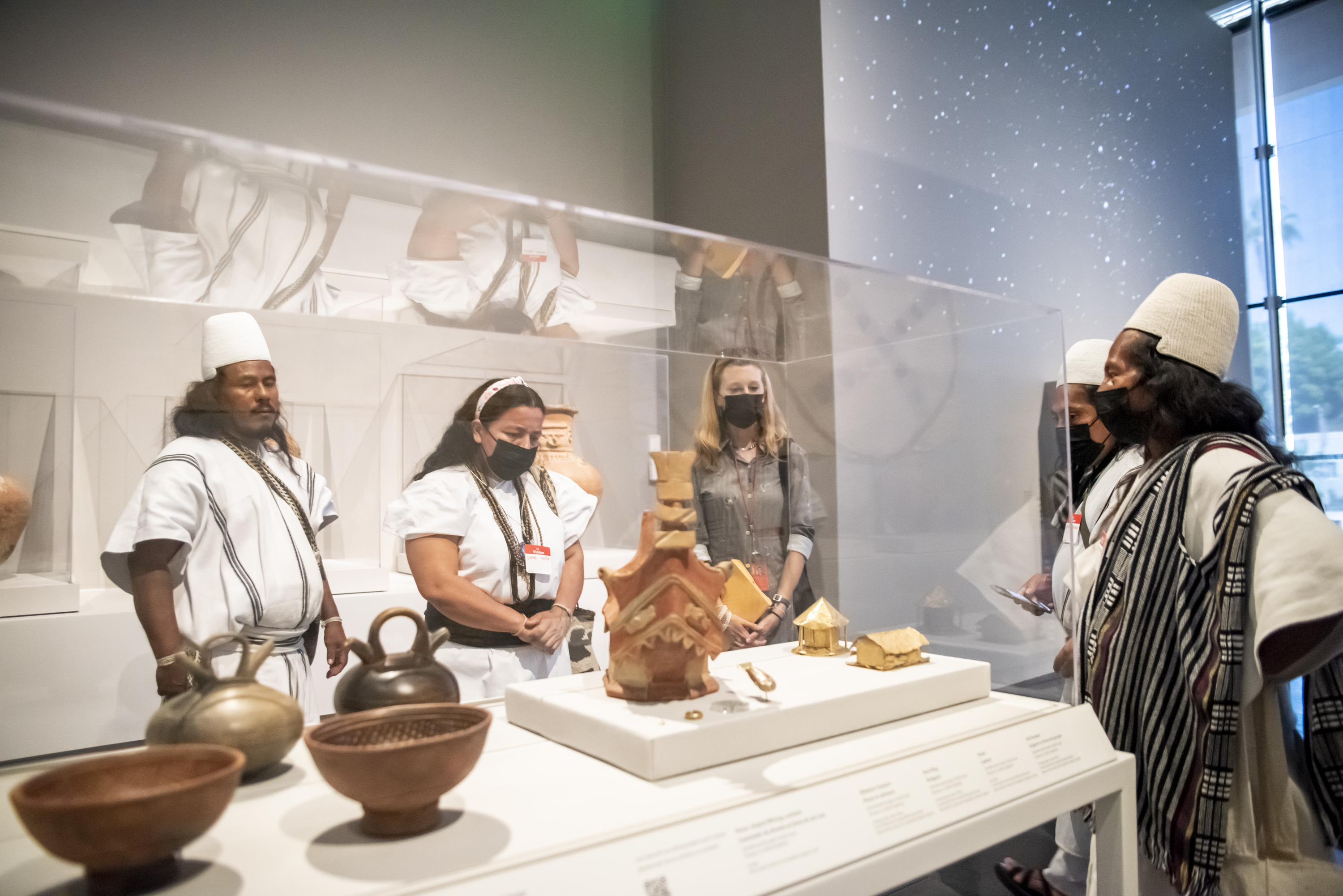
The simple act of bringing our Arhuaco collaborators to LACMA was anything but, and represented a major challenge. Passports and visas had to be arranged, and in the end it was through special efforts via the Colombian Ambassador and Consul that this became possible.
Our guests were welcomed at LACMA on the morning of Monday, 26 September, by LACMA CEO and Wallis Annenberg Director Michael Govan. After an introduction to the museum and a couple of photos at Chris Burden's Urban Light, we all accompanied them into the exhibition. It was a quiet moment, intended to allow our guests to experience the exhibition and to process the result that we, the museum’s curators, designers, and other staff, had created based on our understanding of their guidance and conversations over the past four years. Had we understood and translated their message and perspective correctly? Was it anything like what they had envisaged? Jaison Perez had never traveled outside of Colombia before and his wife Rubiela Guevara had never been on an airplane, let alone abroad. Mamo Camilo had been to Europe, but in truth rarely left his community.
There were many reasons why it was important to invite our Indigenous Colombian colleagues to LACMA in person. First and foremost was to have them experience the outcome of our joint work, and to share their message with museum audiences in person, using their own voices and words. We also wanted them to meet the many staff who had worked on this show, and vice versa to give our colleagues a chance to meet the elders who had so profoundly influenced every aspect of the project. And so, on subsequent days, we arranged for meetings with LACMA staff.
The inclusion in the galleries of the banquitos (traditional wooden stools, commissioned by us from the Arhuaco in Colombia and shipped to L.A.) once more seemed to help facilitate a familiar space and way of interacting. We found ourselves sitting on them in a circle, and listening to the Mamo’s words. Mamo Camilo, Jaison, and Danilo chewed coca leaves and grasped their poporos, leaving specs of white lime powder on the exhibition floor, while Rubiela was quietly spinning raw cotton into thread. Accompanied by a soundscape of birds and rushing wind and water, with projections of leaf-cutter ants on the floor, it felt like one of our gatherings under the tree in Katansama, but shared with a far greater proportion of the “LACMA family,” as Jaison put it.
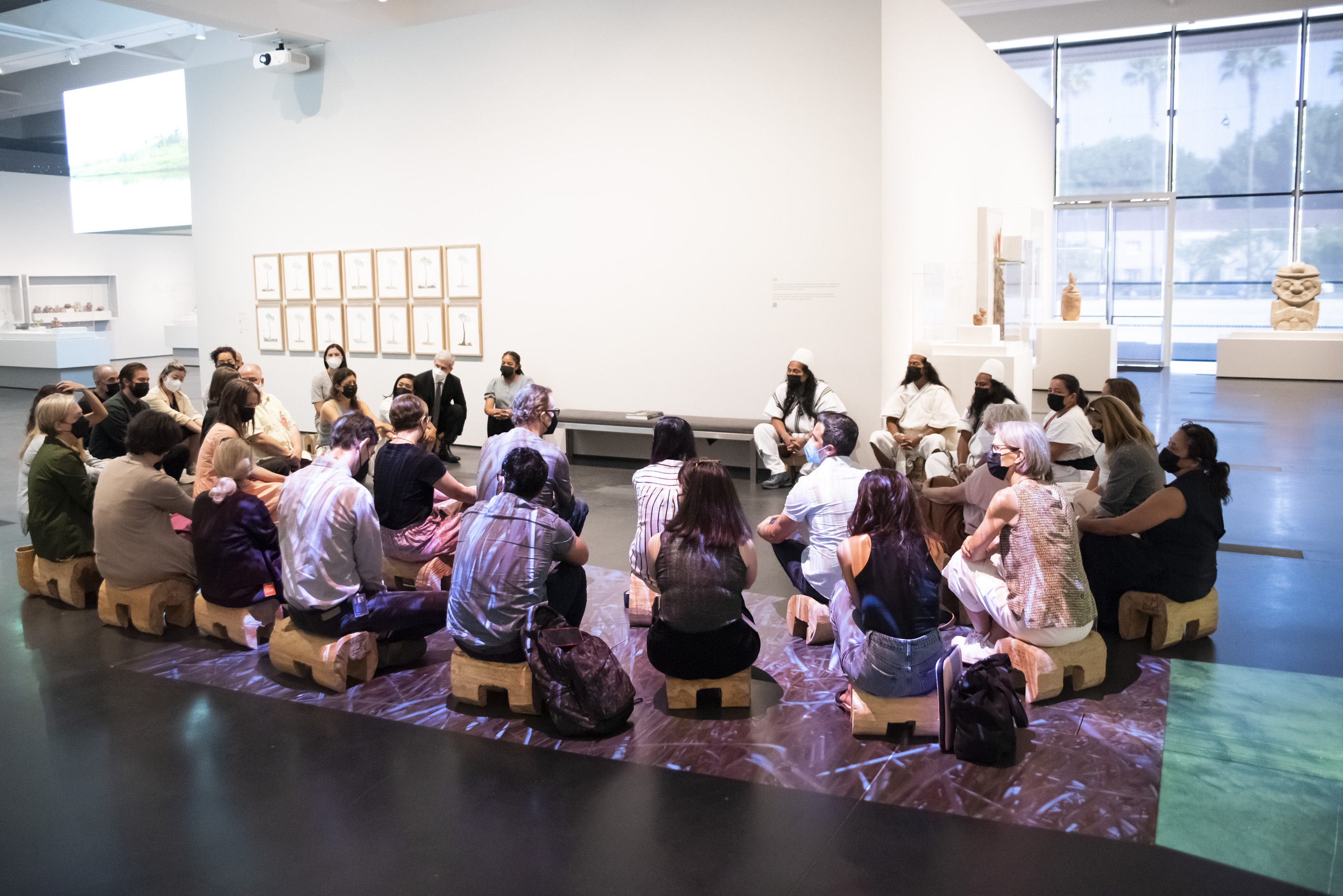
Having had some time to process, on the third day Mamo Camilo surprised us all by stating that there needed to be a ceremony, a pagamento (literally: payment, but meaning: reciprocal offering). He wanted to perform a blessing ritual, right here in the galleries, “tomorrow morning, before breakfast.” (To perform the ritual, participants needed to have fasted beforehand: water was ok, but no food, and definitely no salt.)
And so it was. Given the extremely short notice and fact that this notification spread effectively by word of mouth, it was truly touching to find over 40 staff members on site, bright, early and hungry and committed to the process, whatever it may entail. Sitting on the banquitos in a semi-circle around the Arhuaco elders and the projection of a waterfall, musician Luis Fernando Franco opened the ceremony with the sounds of a traditional ocarina. (Luis is a long-term friend and collaborator of LACMA and of the Arhuaco, and specializes in understanding and playing ancient ceramic ocarinas from the Sierra Nevada de Santa Marta.) Then everyone was given two pieces of raw cotton, one in each hand. We had to divide them into four parts in each hand, and then gather energy and thoughts into them.

First we were to think of a time before we were born, before we materialized, when we were just potential. This is the same as the time of creation, when there was only thought. To cleanse ourselves, we had to start at the beginning, when we were just potential and energy. Both positive and negative energy are needed for balance, with the cotton in one hand storing the negative, and the other the positive. We were also asked to think about thought, and the wind that sustains it. Then, the rocks and the water, each moved and carved by the wind. Then, the plants that grow through this movement. And then, the animals that are nourished by those plants. Then those many little cotton balls were placed onto two banquitos, one for the left hand, one for the right.
These steps were repeated, only this time we were to nourish the cotton with energy/nourishment from our own bodies. We were asked to think about the contributions that we would like to make to the world. To our communities. To our homes, our families, our children. Remembering our time in the womb, when we were nourished by the umbilical cord. Although we are not connected physically in that way anymore, we are still nourished through that connection. We were asked to think of ourselves, who can only be nourished once we learn to nourish all that came before us. At last, having nourished ourselves, they asked us to think of the objects. How would we nourish them, and connect them to these forces of nature? We were to gather nourishment from ourselves, the energy and nourishment that we were born with, that was in us from the very beginning, and to nourish the world and the works around us with this energy.
This meditative session came to its end again with the sound of an ocarina, mimicking melodiously the sound of nature and animals. As a final step, the Arhuacos tied plain white cotton threads around everyone’s wrists, Jaison attending to the women, Rubiela to the men, for the sake of respecting and maintaining balance. This was the aseguranza, a kind of promise and commitment to honor the intentions and thoughts of today’s encounter.
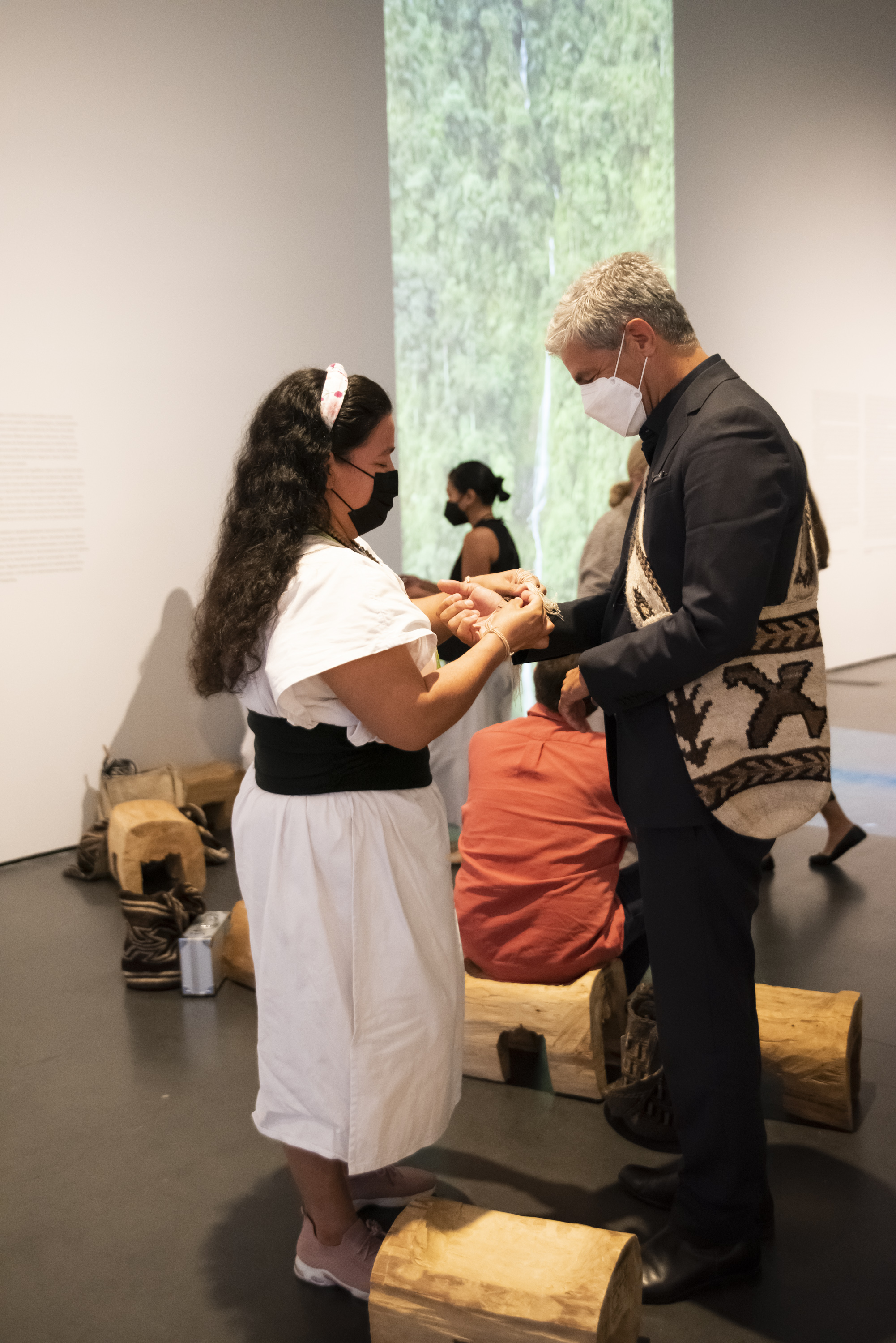
Having gathered up all the little cotton pieces, Jaison asked: “Where on the museum’s grounds can we put these? It needs to be a place that will not be disturbed.” Another unforeseen request, and yet a sign of how spontaneity defines the ways in which social interactions take place among many non-Western cultures. Friendly discussion ensued as people tried to suggest suitable places. Within a couple of minutes, Michael Govan mentioned the palm tree at the center of LACMA’s Pritzker Parking Garage. Rising from two stories below to well into the sky, it was said to be 140 years old. We all headed there.
“We need some rocks,” was the next (for us unforeseen) request. “Rocks and water.” The response was magical. Everyone hustled and within a few minutes someone had produced two rounded stones from the Education department (where they had been used as paperweights for many years), and a bottle of clean water turned up from one of the nearby labs. It was probably nearly 11 am by now, but people were energized, trying their best to help facilitate and participate in this beautifully organic process. After a short private ceremony led by Mamo Camilo with just the Arhuacos, the cotton containing all our thoughts and nourishment was buried at the base of the tree and covered by the stones. Jaison described the tree as the umbilical cord that would connect the Sierra Nevada and LACMA. Then, in turn, everyone went up to wash their hands and cleanse themselves, “like the rain that washes clean the mountain,” according to Jaison. (This element was included to address our own home, Los Angeles, and our need to care for the water and the place where the water is born.)

We should have thought of this ourselves, but in our busyness we didn’t. So in some ways it was all the more special when Alicia Vogl Sanz, a LACMA teaching artist, started passing around homemade scones. Having skipped breakfast, to share a bite of home-cooked food was especially rewarding and bonding for everyone. It felt familiar, personal, and uncomplicated—in the way good relationships are.
Jaison told me later that they were touched by how many people from LACMA came to meet them, to listen, and to participate in the ceremony. I also got the impression that the absence of official LACMA cameras to document these extraordinary events was significant. Not that they had ever objected to being filmed or photographed (we had, after all, filmed an entire documentary series about this project and they were very happy with it), but in this particular context, it seemed to signal that the museum genuinely meant to learn, listen, and strengthen the relationship, with less concern for publicity or photo-ops.
This project, and this particular visit of our Arhuaco friends, had a profound and long-lasting impact: on museum staff in the way they understand, first-hand, Indigenous perspectives, collaboration, and the role of the museum in stewarding, interpreting, and displaying cultural collections from the Indigenous Americas; and the Indigenous leaders, in seeing a museum institution demonstrate openness, care, and concern for their culture, perspective, and guidance in handling ancestral cultural materials. It required both us going there, and them coming here.
“I think everyone just really needed this at this time.” —Clarissa Esguerra, Associate Curator, Costume & Textiles
“For the first time, it felt like the museum became a place for healing, instead of a space that perpetuates harm.” —Alyce de Carteret, Curatorial Fellow, Art of the Ancient Americas
The photos in this post were taken privately and independently by Jota Arango, long-term friend of Jaison and Mamo Camilo and collaborator in various projects with Arhuaco communities. He had been invited to accompany the Arhuacos on their journey to L.A., for practical reasons and as a thanks for this work on The Portable Universe projects. We are grateful that he shared these images with LACMA.



